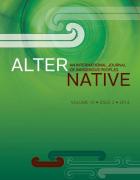- A
- A
- A
- ABC
- ABC
- ABC
- А
- А
- А
- А
- А
- HSE Campus in St. Petersburg
- School of Arts and Humanities
- Department of History
- News
- The Article by Associate Professor I.V. Sablin and Student A. Korobeynikov"Buryat-Mongol and Alash autonomous movements before the Soviets, 1905-1917"
-
Department
-
Educational programmes
Address:
190068 Saint Petersburg
123 Griboedov channel, Room 123
Phone:+7 (812)786-92-49
Postal address:
190068 Saint Petersburg
123 Griboedov channel
The Department of History was created in 2012. The overarching goal of the department is systematic development of the field of global, comparative, and transnational history as a potent tool of overcoming the limitations of national history canon, fostering interdisciplinary dialogue in the field of social sciences and humanities, and brining new public relevance to historical knowledge. The department mission includes the development of new type of historical undergraduate and graduate education in Russia and pioneering new research fields in Russian historiography in dialogue with the global historical profession.
De Gruyter Oldenbourg, 2025.
In press
Nedopekina A.
Laboratorium: Russian Review of Social Research. 2024. Vol. 16. No. 1. P. 130-134.
In bk.: Revolutionary Biographies in the 19th and 20th Centuries: Imperial – Inter/national – Decolonial. Göttingen: V&R Unipress, 2024. P. 17-34.
Khvalkov E., Levin F., Кузнецова А. Д.
Working Papers of Humanities. WP. Издательский дом НИУ ВШЭ, 2021
Address:
190068 Saint Petersburg
123 Griboedov channel, Room 123
Phone:+7 (812)786-92-49
Postal address:
190068 Saint Petersburg
123 Griboedov channel

The Article by Associate Professor I.V. Sablin and Student A. Korobeynikov"Buryat-Mongol and Alash autonomous movements before the Soviets, 1905-1917"
 Employing a comparative perspective, this article traces the development and implementation of two autonomous projects in Asian Russia. The Buryat- Mongol and Kazakh (Alash) Indigenous intellectuals synthesized local ideas and the globally circulating notions of national self- determination, enlightenment and democracy when articulating political unity of Indigenous peoples in national terms. By advocating their broader representation in existing and envisioned power structures they fought against discrimination and protected native languages and other forms of cultural expression from assimilation. This article shows that these Indigenous intellectuals were not silent recipients of the policies coming from the imperial and post- imperial centers but actively engaged in designing and ensuring the future of their communities.
Employing a comparative perspective, this article traces the development and implementation of two autonomous projects in Asian Russia. The Buryat- Mongol and Kazakh (Alash) Indigenous intellectuals synthesized local ideas and the globally circulating notions of national self- determination, enlightenment and democracy when articulating political unity of Indigenous peoples in national terms. By advocating their broader representation in existing and envisioned power structures they fought against discrimination and protected native languages and other forms of cultural expression from assimilation. This article shows that these Indigenous intellectuals were not silent recipients of the policies coming from the imperial and post- imperial centers but actively engaged in designing and ensuring the future of their communities.
Alexandr Sergeevich Korobeinikov
Ivan Sablin
-
https://elearning.hse.ru/en/mooc/
Massive Open Online Courses
-
https://www.hse.ru/en/visual/
HSE Site for the Visually Impaired
-
http://5top100.com/
Russian Academic Excellence Project 5-100
- © HSE University 1993–2025 Contacts Copyright Privacy Policy Site Map
- Edit

